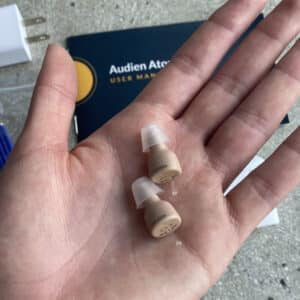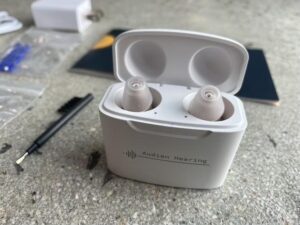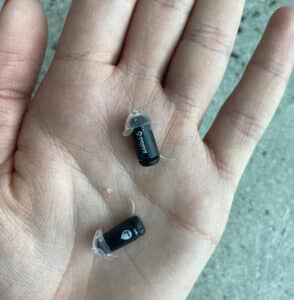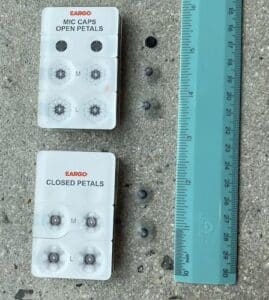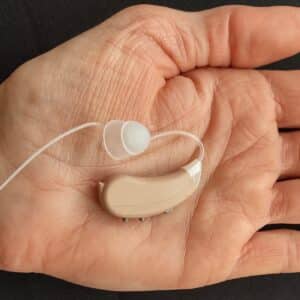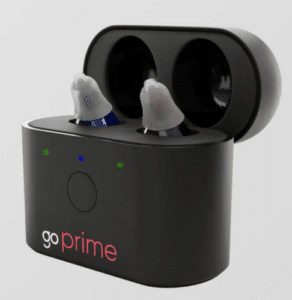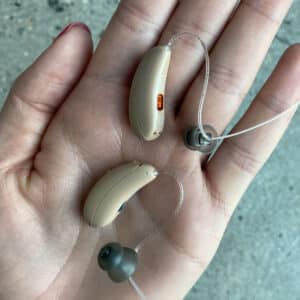Jabra Enhance is a company known for its excellent customer care and the option of a warranty that’s longer than most other online hearing aid brands. Jabra Enhance hearing aids are also sold online, which is convenient for people who are concerned about COVID-19 or who don’t live near an in-person hearing clinic. These factors are why we named Jabra Enhance the “Best for Seniors.”
The 8 Best Rechargeable Hearing Aids of 2025
Key Takeaways
- Hearing aids with rechargeable batteries cost anywhere from $99–$7,000 per pair and offer the convenience of hearing assistance without the need to change batteries.
- Most rechargeable hearing aid batteries will last from 15–30 hours between charges.
- Rechargeable hearing aids can be bought online, through hearing care clinics, and from other retail outlets.
- The best rechargeable hearing aids on the market include brands like Jabra Enhance, Eargo, Audien, and others mentioned in this guide.
Hearing loss can make it harder to enjoy everyday activities, like spending time with friends and family. It also raises the risk of dementia, depression, and injuries caused by falling, according to research. [1] Lin FR, et al. Hearing Loss and Falls Among Older Adults in the United States. Found on the internet at https://www.ncbi.nlm.nih.gov/pmc/articles/PMC3518403/ Hearing aids with rechargeable batteries can make it easier to get the help you need for hearing loss by offering the convenience of not having to change small and often hard-to-handle batteries. Many rechargeable models also help you save money over time by not requiring a constant supply of disposable batteries.
We conducted a survey of 600 hearing aid users and found that rechargeability was the No. 2 most desired feature in a hearing aid, right behind “digital noise reduction.” But with multiple rechargeable hearing aids on the market, how do you choose the best hearing aid for your needs? We researched and tested the top brands to help you make an informed decision.
A quick look at the best rechargeable hearing aids of 2025
- Jabra Enhance: Best for Seniors
- Audien: Most Affordable
- Eargo: Best Invisible OTC Hearing Aid
- Lexie B2 Powered by Bose: Most User-Friendly
- ReSound Omnia: Most Advanced
- Sony CRE-E10: Best Earbud Style
- Go Hearing Go Prime: Most Features for the Money
Our Team recommends products and services we believe provide value in the lives of our readers. We’ve spent more than 5,000 hours conducting in-depth research on hearing aid devices to give you the most accurate hearing aid reviews. To make these selections, we:
- Consulted with audiologists and geriatric care experts
- Mystery shopped 18 brands
- Selected five models as best rechargeable hearing aids
- Surveyed hundreds of hearing aid users
- Tested various models of hearing aids
- Interviewed experts in the field
- Read thousands of verified customer reviews
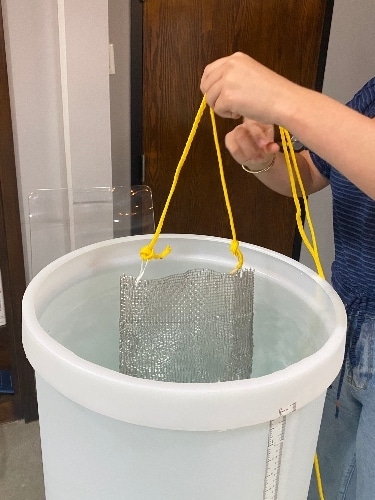
Read more about our hearing aid review methodology.
Table 1 Comparison of the best rechargeable hearing aids, as of 2025
| Price per pair | $799–$1,995 | $99–$249 | $799–$2,950 | $999 | $3,200–$6,500 | $1,299 | $299 | $1,598–$2,998 |
| Hearing aid style | Receiver-in-canal, mini receiver-in-ear | In-the-canal | Completely-in-canal | Receiver-in-canal | Receiver-in-canal | ITE | ITE | Receiver-in-canal |
| Level of hearing loss | Mild to moderate | Mild to moderate | Mild to moderate | Mild to moderate | Mild to profound | Mild to moderate | Mild to moderate | Mild to moderate |
| Maximum battery life (hours) | 30 | 20–24 | 16 | 18 | 30 | 26 | 30 | 16 |
| Charging time (hours) | 3 | 4–6 | 2.5 | 3 | 3 | 4 | 3 | 3–5 |
| Bluetooth | Yes | No | Yes (for adjustments only, no streaming) | Yes (for adjustments only, no streaming) | Yes | Yes | No | Yes |
| Telecoil | Yes | No | No | No | Yes | No | No | Yes (by request) |
| How to adjust | App, buttons on hearing aid, or remote assistance | Screw on back of hearing aid | App, tapping the hearing aid, or remote assistance | App | App, buttons on hearing aid, or remote assistance | App | Buttons on hearing aid | App, buttons on hearing aid, or remote control |
| Standard warranty length (years)* | 1–3 | 1 | 1–2 | 1 | 1–4 | 1 | 1 | 2 |
| Financing available? | Yes | No | Yes | No | Yes | Yes | Yes | Yes |
Best rechargeable hearing aids of 2025
Table 2 Audicus rechargeable hearing aid models
Spirit 1 | Spirit 2 | Omni | Omni 2 | |
|---|---|---|---|---|
| Price | $1,598 | $1,998 | $2,598 | $2,998 |
| Adjustments by app | ✔ | ✔ | ✔ | ✔ |
| Bluetooth streaming | ✔ | ✔ | ✔ | ✔ |
| Remote Adjustments | ✔ | ✔ | ✔ | ✔ |
| Directional Microphones | ✔ | ✔ | ✔ | ✔ |
| Listening profiles | 4 | 6 | 6 | 6 |
| Sound processing channels | 14 | 16 | 16 | 20 |
Pros/Cons of rechargeable hearing aids
How do rechargeable hearing aids work?
Even the least expensive hearing aids are technologically advanced machines. “Hearing aids are computers in your ears,” said Sheri Mello, a doctor of audiology in Raleigh, North Carolina. These small, high-tech devices receive sounds from the environment, change them to digital signals, amplify them according to your hearing needs, and then send them to your inner ear.
This technology is the same whether you have hearing aids with disposable or rechargeable batteries.
No battery door
The biggest difference between the two types of hearing aids is convenience. Hearing aids with disposable batteries have a battery door in the back that you open to replace the battery every three to five days. Many older adults, especially those with vision impairment, arthritis in the hands, or hand tremors, may find it challenging to open the door and replace the batteries in the battery compartment.
Rechargeable hearing aids, on the other hand, do not contain a battery door. The battery stays in the hearing aid for the entire life of the device, which is typically around five years.
More water resistant
One attractive feature of rechargeable hearing aids is that thanks to their one-piece design, they are naturally more water-resistant than devices with disposable batteries. This is nice for anyone who enjoys outdoor activities or even for those times when you forget to remove your hearing aids before stepping into the shower.
For more details on how hearing aids work and differences among the styles available, read our hearing aids buyer’s guide.
Two types of rechargeable hearing aid batteries
Batteries for rechargeable hearing aids come in two types: lithium-ion and silver-zinc.
Most rechargeable hearing aids contain lithium-ion batteries, which are the same type found in many other electronics such as cell phones. They generally offer a shorter charging time and longer battery life compared to silver-zinc batteries. [2] UNC Hearing and Communication Center. Ditch the disposable batteries! Found on the internet at https://www.med.unc.edu/healthsciences/sphs/hcc/patient-resources/technology-updates/rechargeable-hearing-aids/
Do the batteries need to be replaced?
You never need to replace the batteries in a hearing aid with rechargeable batteries. In fact, in most models there is no way to replace the battery, as it is completely enclosed within the hearing aid. The battery should last the life of your hearing aid, which is about five years for most products.
How do you charge a rechargeable hearing aid?
To charge your hearing aids, simply place them in their charging case for the amount of time your manual specifies for a full charge. Most cases have a light that flashes during the charging process, changing to a steady light (or a different color) when your hearing aids are fully charged.
Note that several manufacturers direct you to remove your hearing aids from the charging case after they’re completely charged. Leaving them in the case too long can drain the battery over time.
How long do rechargeable hearing aid batteries last?
Most hearing aids reach a full charge in three to six hours of charging time. Jabra Enhance is one brand that offers a quick charge option of just one hour, but this doesn’t give you a full battery charge (15 hours after a one-hour charge vs. 30 hours after a three-hour charge).
Table 3 Battery life and charging time of rechargeable hearing aids
Charging time | Battery life (hours) | |
|---|---|---|
| Jabra Enhance | 3 | 30 |
| Eargo | 2.5 | 16 |
| Audien | 4–6 | 20–24 |
| Audicus | 3–5 | 16 |
| ReSound One | 3 | 30 |
Factors that affect hearing aid battery life
Manufacturers of rechargeable hearing aids typically provide a range or maximum length of time for battery life. It’s impossible to give a concrete number because the following factors impact how long your hearing aid batteries will last on a full charge:
- Bluetooth use: Hearing aid experts caution that streaming music, phone calls, and movies to your hearing aids can drain the battery up to three times as quickly.
- Telecoil: Using the telecoil in your hearing aid to hear sounds in a public facility with assisted listening technology is a great feature for a better listening experience, but telecoil usage may also drain your batteries in half the time.
- Tinnitus masking: Some hearing aids include technology to help manage symptoms of tinnitus. This condition causes a ringing or buzzing sound in the ears, and certain tones can be played through your hearing aids to help distract from it. Tinnitus masking technology can drain the battery more quickly than a device without this feature.
- Temperature: If you spend much time outside, keep in mind that both low temperatures and those above 90 degrees Fahrenheit can cause the battery to drain more quickly. If you know you are going to be outside in a cold environment, protect your hearing aids from the elements with a scarf, headband, or earmuffs.
- Altitude: The air at higher altitudes contains less oxygen, and lower oxygen levels can lead to shorter battery life.
- Technical factors: Things such as signal strength affect the life of a fully charged hearing aid battery.
- Degree of hearing loss: People with more severe hearing loss may find their hearing aid battery drains faster than someone with milder hearing loss using the same type of hearing aid. This is because more amplification requires more battery power, causing it to lose its charge more quickly.
How much do rechargeable hearing aids cost?
One reason people hesitate to seek treatment for their hearing loss (and on average wait 10 years to get hearing aids, according to Johns Hopkins Medicine) is because they are worried about the high cost of hearing aids. [3] Johns Hopkins Medicine. The Hidden Risks of Hearing Loss. Found on the internet at https://www.hopkinsmedicine.org/health/wellness-and-prevention/the-hidden-risks-of-hearing-loss Constantly buying disposable batteries can add to that cost, running up to $100 per year.
It’s no surprise that rechargeable hearing aids have become increasingly popular in recent years. The initial cost of rechargeable hearing aids can be a bit higher than hearing aids with disposable batteries, but over time you may save money by not having to worry about buying and changing batteries every few days.
Cost of hearing aids with disposable vs. rechargeable batteries
Rechargeable hearing aids usually cost more up front than devices with disposable batteries. Hearing aids with rechargeable batteries can range anywhere from $50–$400 more per pair, depending on the brand and hearing aid style.
While disposable batteries last only a few days before needing to be replaced, rechargeable batteries are designed to last the life of the hearing aid, which is typically about five years. If a rechargeable battery dies while the hearing aid is still under warranty, you should be able to get it replaced at no cost. Both OTC and prescription devices may need to be mailed in for the company to replace the battery, though. If it dies after the warranty has expired, it’s usually best to buy a new hearing aid, as rechargeable batteries are quite expensive.
If you would be happy with either a disposable or rechargeable device, the more budget-friendly option depends on the extra amount you’ll have to pay for the rechargeable model. We found you can buy a year’s supply of disposable hearing aid batteries for about $40 by purchasing in bulk. For a model such as Lexie that costs $50 more for rechargeable batteries, you’ll break even in a little more than one year. But for a brand such as Audicus, which charges $200 more for a pair of hearing aids with rechargeable batteries, you would need to buy disposable batteries for about five years before breaking even. Many prescription hearing aids come with the option to choose a disposable or rechargeable battery as well.
OTC rechargeable hearing aids
The recent passage of the FDA’s final rule on over-the-counter (OTC) hearing aids should help lower the costs of rechargeable hearing aids even more. These hearing aids are available online and in stores for adults ages 18 and older with perceived mild to moderate hearing loss. [4] U.S. Food and Drug Administration. FDA Issues Landmark Proposal to Improve Access to Hearing Aid Technology for Millions of Americans. Found on the internet at https://www.fda.gov/news-events/press-announcements/fda-issues-landmark-proposal-improve-a
With the passage of this rule, the FDA aims to open the way for greater innovation and competition among hearing aid manufacturers, increasing access to hearing aid technology for more Americans.
How to save money on rechargeable hearing aids
Read on to see how you can save money when shopping for rechargeable hearing aids.
Watch for seasonal discounts
Hearing aid manufacturers frequently run sales around the holidays and other times throughout the year. Jabra Enhance ran an end-of-summer sale with $300 off the Enhance Select 100 and Enhance Select 200 in September 2022.
Trade in old hearing aids
Some companies will give you money to put toward a new pair of hearing aids if you have an old pair to trade in. For example, Audicus offers $50–$100 per hearing aid for old or damaged devices.
Look for hearing aid donation programs
ReSound conducts a program called ReSound Gives Sound, in which the company donates hearing aids at low or no cost to audiologists’ clinics around the country. You can use the ReSound online clinic locator to find a hearing care clinic in your area that carries ReSound hearing aids and ask if they participate in the program.
Take advantage of veterans benefits
If you’re a veteran and are eligible for general VA health care benefits, you can also receive hearing exams, hearing aids, and hearing aid batteries at no cost.
You might be surprised to learn that tinnitus, characterized by ringing or buzzing in the ears, affects veterans more commonly than any other disability, according to the U.S. Department of Veterans Affairs. [5] American Tinnitus Association. Tinnitus. Found on the internet at https://www.ata.org/about-tinnitus/why-are-my-ears-ringing/ While tinnitus is not always associated with hearing loss, it is a common finding among people with hearing loss and can also cause anxiety and mood disturbances. [6] U.S. Department of Veterans Affairs. Hearing Loss. Found on the internet at https://www.research.va.gov/topics/hearing.cfm#research4
If you experience tinnitus or think you may have difficulty hearing, contact your local Veterans Affairs office to schedule a free hearing exam.
Use NCOA’s Benefits CheckUp tool to see what other benefits you qualify for.
Consider over-the-counter (OTC) hearing aids
As noted above, OTC hearing aids are available for adults over the age of 18 with perceived mild to moderate hearing loss. They are expected to cost anywhere from $600–$1,600 per pair based on estimates from hearing industry experts. That’s at least $3,000 less than the average price of a pair of prescription hearing aids. [7] White House. FDA Takes Action to Deliver Lower-Cost, Innovative Hearing Aids to Millions More Americans. Found on the internet at https://obamawhitehouse.archives.gov/blog/2016/12/07/fda-takes-action-deliver-lower-cost-innovative-hearing-aids-million
Does Medicare cover hearing aids?
Unfortunately, Medicare Part A and B do not cover hearing aids. But if you have Medicare Advantage (also called Medicare Part C), your plan might pay for some of the costs associated with hearing aids. Check with your insurance provider for details.
Are rechargeable hearing aids waterproof?
Most rechargeable hearing aids (including every brand in this review except Audien) are water resistant. Currently, the only truly waterproof model on the market is the Phonak Audeo Lumity Life. In the instruction manual for your hearing aids, you will see an IP rating listed for your specific device if it’s water resistant. This number refers to how well the hearing aid’s outer shell protects the inner working parts from dust and moisture.
In our test for water resistance, each of the water-resistant hearing aids worked well (including pairing to other devices with Bluetooth) after 30 minutes under three feet of water.
Who are rechargeable hearing aids best suited for?
Anyone with hearing loss who may have trouble changing disposable hearing aid batteries might prefer hearing aids with rechargeable batteries. This could include people with sight issues, tremors, or dexterity issues in their hands due to arthritis. We found it difficult to open the battery door on certain hearing aids we tested, and handling the tiny disposable batteries was also a challenge.
One consideration with rechargeable hearing aids is that you will need to remember to put them in their charging case, usually every night, so they’re ready to go with a full charge the next day. It may be helpful to set a reminder on your phone, put a note in your bathroom or other place you’ll be sure to see it, or have a loved one or friend who regularly checks in remind you to charge your hearing aids each day.
Also, hearing aids are even easier to lose than car keys or a cell phone (since they’re so small). Be sure to keep your charging case in the same location, and as soon as you take your hearing aids out of your ears, place them in or near their case. One great advantage of both Jabra Enhance and ReSound hearing aids is that both brands have a function on the mobile app that uses GPS to locate your hearing aids if you can’t find them.
Because hearing loss is associated with a variety of other conditions, including dementia, mental health issues, and falls, it’s important to seek help for hearing loss as soon as possible. Take NCOA’s Fall Free CheckUp to find ways you can lower your risk of falls.
Factors to consider when choosing a rechargeable hearing aid
It’s important to think about your degree of hearing loss, personal preferences, lifestyle, and, of course, your budget when shopping for a hearing aid.
Hearing loss
The first step in shopping for hearing aids is to take an online hearing screening or in-person hearing exam so you can determine which hearing aids will be able to treat your hearing loss.
For example, Eargo and Audien are only appropriate for mild to moderate hearing loss. If your hearing loss is severe or profound, these hearing aids will not be adequate for improving your hearing.
Even if you’re considering buying OTC hearing aids, it’s a good idea to have an in-person hearing evaluation first. In contrast to online hearing tests, in-person exams allow a hearing care professional to rule out any medical issues that could be affecting your hearing. They are also more thorough and detailed than online screenings.
For more information on the different types of hearing exams, degrees of hearing loss, and reasons to seek in-person evaluation by a hearing care specialist, read our complete hearing aids buyer’s guide.
Personal preference
In one of the hearing aid focus groups conducted by our team, a participant pointed out that he wanted a hearing aid with Bluetooth capability so he could use his smartphone to make adjustments on his hearing aid. But he mentioned that not everyone would need that option, and you will pay more for it. And he was right: Our hearing aids customer survey found Bluetooth was the sixth most important feature out of 10 when it came to features people wanted in a hearing aid.
It’s a good idea to think about which features you’ll actually use before going to a hearing clinic or placing an order online. Is Bluetooth something you’ll use? Do you want to be able to schedule a remote appointment with a hearing specialist if you run into issues, or would you prefer in-person care? Do you want a discreet in-the-ear hearing aid, or would a behind-the-ear model be fine as well? All of these factors will influence your decision on which hearing aid is the best fit for you.
Lifestyle
Are you an active person who enjoys exercising or being outdoors? You may want to choose a water-resistant hearing aid. If you enjoy traveling, longer battery life may be a more important factor. And if you often visit places that can be noisy (e.g., restaurants, movies, or concerts), advanced sound processing offered by brands such as ReSound could make your listening experience much more enjoyable.
Rechargeable Hearing Aids: Bottom Line
These days, there are many styles and price levels of rechargeable hearing aids to choose from.
We found Audien to be a great choice for budget-conscious shoppers, while Jabra Enhance is a good option if you want an online hearing aid with continued hearing specialist support after the sale, as long as you purchase the premium package.
Audicus offers a mid-range price point with a variety of models and features. Eargo is a great choice if you want a nearly invisible hearing aid but don’t need Bluetooth streaming. And if price isn’t a primary factor and you want all the latest hearing aid features, ReSound makes an excellent product.
Frequently asked questions
Rechargeable hearing aids range in price from $99 for the most basic devices to more than $6,000 per pair for advanced models. Your specific hearing loss, lifestyle, and preferences all play a part in which hearing aid is best for you.
Generally, rechargeable hearing aid batteries last for the life of the hearing aid, which is about 3–5 years.
If your hearing aid battery won’t hold a charge, contact the manufacturer or your hearing care clinic to see if it will repair or replace your hearing aid.
Rechargeable hearing aids are becoming so common that they are about the same price as devices with disposable batteries, but some rechargeable hearing aids are a few hundred dollars more up front. Keep in mind, though, that with rechargeable models you won’t have the ongoing cost of disposable batteries.
Our team likes Audicus, Jabra Enhance, and ReSound One among the brands that offer Bluetooth connectivity.
These hearing aids range in price from $1,600 to about $4,800 per pair.
Not always. Eargo and Audien both carry small hearing aids that are rechargeable.
No, the batteries stay in the hearing aid for the entire life of the device.
Yes. Audien offers two in-the-ear models, the Atom and Atom Pro, with rechargeable batteries. Eargo also makes completely-in-canal devices that are rechargeable.
Rechargeable hearing aids last about five years with regular cleaning and maintenance.
Have questions about this review? Email us at reviewsteam@ncoa.org.
Sources
- Lin FR, et al. Hearing Loss and Falls Among Older Adults in the United States. Found on the internet at https://www.ncbi.nlm.nih.gov/pmc/articles/PMC3518403/
- UNC Hearing and Communication Center. Ditch the disposable batteries! Found on the internet at https://www.med.unc.edu/healthsciences/sphs/hcc/patient-resources/technology-updates/rechargeable-hearing-aids/
- Johns Hopkins Medicine. The Hidden Risks of Hearing Loss. Found on the internet at https://www.hopkinsmedicine.org/health/wellness-and-prevention/the-hidden-risks-of-hearing-loss
- U.S. Food and Drug Administration. FDA Issues Landmark Proposal to Improve Access to Hearing Aid Technology for Millions of Americans. Found on the internet at https://www.fda.gov/news-events/press-announcements/fda-issues-landmark-proposal-improve-access-hearing-aid-technology-millions-americans
- American Tinnitus Association. Tinnitus. Found on the internet at https://www.ata.org/about-tinnitus/why-are-my-ears-ringing/
- U.S. Department of Veterans Affairs. Hearing Loss. Found on the internet at https://www.research.va.gov/topics/hearing.cfm#research4
- White House. FDA Takes Action to Deliver Lower-Cost, Innovative Hearing Aids to Millions More Americans. Found on the internet at https://obamawhitehouse.archives.gov/blog/2016/12/07/fda-takes-action-deliver-lower-cost-innovative-hearing-aids-millions-more-americans










